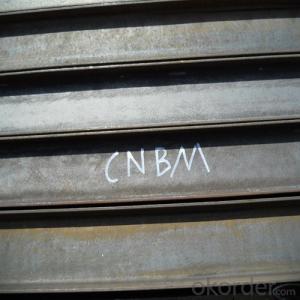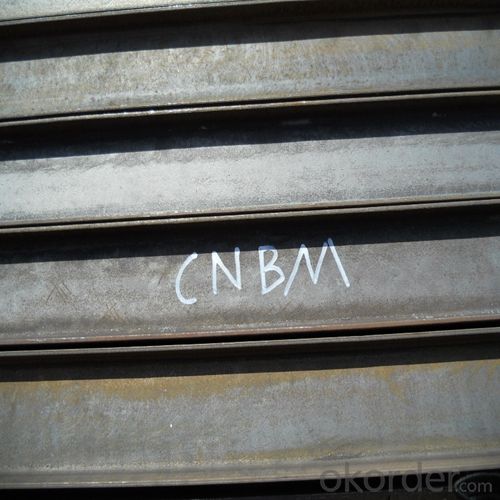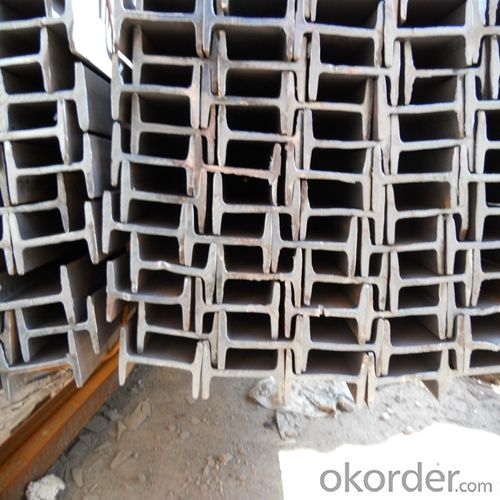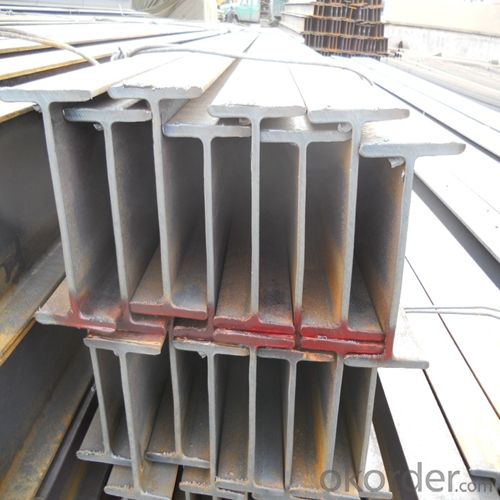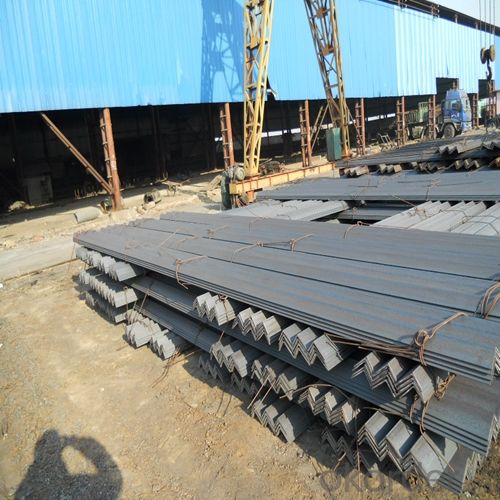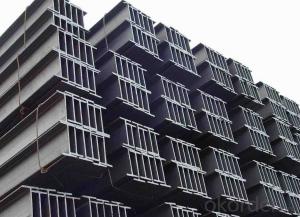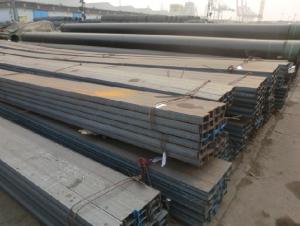Hot Rolled Steel I-Beam IPE IPEAA EN10025 S235JR with Good Price
- Loading Port:
- Tianjin
- Payment Terms:
- TT OR LC
- Min Order Qty:
- 100 m.t.
- Supply Capability:
- 30000 m.t./month
OKorder Service Pledge
OKorder Financial Service
You Might Also Like
Product Description:
Specifications of High Quality Steel I Beam
Standard: EN10025, ASTM, GB Standard, DIN, JIS, etc.
Material of High Quality Steel I Beam:Q235, SS400, A36, S235JR, S275JR, etc
Alloy No. | Grade | C | Mn | S | P | Si |
Q235 | B | 0.12%-0.20% | 0.3%-0.7% | <=0.045% | <=0.045% | <=0.3% |
Sizes: 80MM-270MM
Section | Standard Sectional Dimensions(mm) | ||||
h | b | s | t | Mass Kg/m | |
IPE80 | 80 | 46 | 3.80 | 5.20 | 6.00 |
IPE100 | 100 | 55 | 4.10 | 5.70 | 8.10 |
IPE120 | 120 | 64 | 4.80 | 6.30 | 10.40 |
IPE140 | 140 | 73 | 4.70 | 6.90 | 12.90 |
IPE160 | 160 | 82 | 5.00 | 7.40 | 15.80 |
IPE180 | 180 | 91 | 5.30 | 8.00 | 18.80 |
IPE200 | 200 | 100 | 5.60 | 8.50 | 22.40 |
IPE220 | 220 | 110 | 5.90 | 9.20 | 26.20 |
IPE240 | 240 | 120 | 6.20 | 9.80 | 30.70 |
IPE270 | 270 | 135 | 6.60 | 10.20 | 36.10 |
IPEAA80 | 80 | 46 | 3.20 | 4.20 | 4.95 |
IPEAA100 | 100 | 55 | 3.60 | 4.50 | 6.72 |
IPEAA120 | 120 | 64 | 3.80 | 4.80 | 8.36 |
IPEAA140 | 140 | 73 | 3.80 | 5.20 | 10.05 |
IPEAA160 | 160 | 82 | 4.00 | 5.60 | 12.31 |
IPEAA180 | 180 | 91 | 4.30 | 6.50 | 15.40 |
IPEAA200 | 200 | 100 | 4.50 | 6.70 | 17.95 |
Length: 5.8M, 6M, 9M, 12M or as the requriements of the clients
Descriptions of Metal Structural Steel I-Beam
Grade:SS400,A36,S235JR,S275JR,Q235B. Size:80mm---270mm
1.Origin: Tangshan city . 2.Steel Material :Q195-Q235. ASTM A36, SS400.ect
3.Standard: GB ,JIS ,BS, ASTM, DIN. 4.Size: Meet standard size or as buyer's request .
5.Invoicing on theoretical weight or actual weight as customer request 6.Length: 5.8M, 6M, 8M, 9M, 12M.
Q235B
Chemical composition
Alloy No. | Grade | C | Mn | S | P | Si |
Q235 | B | 1.12%-0.20% | 0.3%-0.7% | <=0.045% | <=0.045 | <=0.3 |
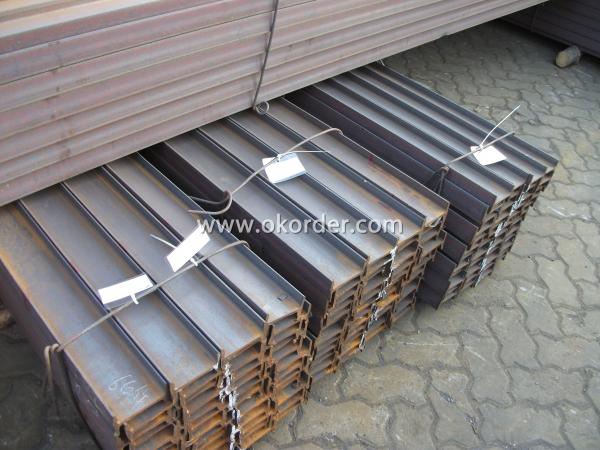
Applications of Metal Structral Steel I-Beam
1.Support structures 2.Pre-engineered buildings 3.Prefabricated structure
4.It is widely used in various building structures and engineering structures such as roof beams, bridges, transmission towers, hoisting machinery and transport machinery, ships, industrial furnaces, reaction tower, container frame and warehouse etc.
Packing & Devilivery of Metal Structual Steel I-Beam
1.Packing: All the metal structural steel I- Beams will be tied by wire rod in bundles and loaded in containers or in bulk cargo. All the bundles will be hung the markings of CNBM, which include the trademark, size, material, length, etc. We can also hang the lables according to the requriements of the customers.
2.Each bundle not more than 3.5MT for bulk vessel; less than 3 MT for container load
3.Tag mark: there will be tag mark tied up on the bundles. The information usually including supplier logo and name, product name, made in China, shipping marks and other information request by the customer. If loading by container the marking is not needed, but we will prepare it as customer request.
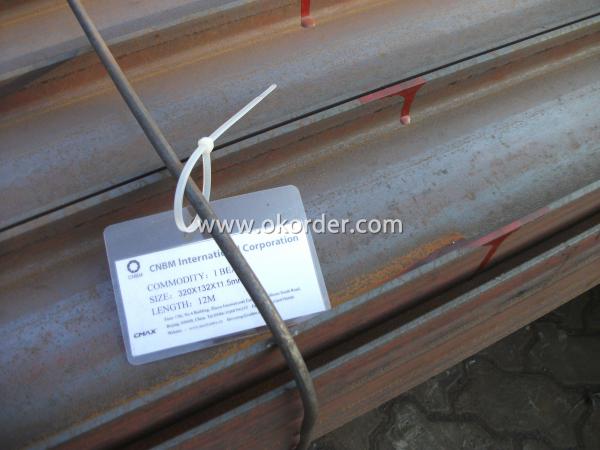
4.Delivery time: Within 30 days after receiving original L/C at sight or deposit by T/T, all the metal structural steel I-Beams will be transported to the port of loading and prepared to load.
5.Transportation: the goods are delivered by truck from mill to loading port, the maximum quantity can be loaded is around 40MTs by each truck. If the order quantity cannot reach the full truck loaded, the transportation cost per ton will be little higher than full load.
Payment terms of Metal Structural Steel I-Beam
1).100% irrevocable L/C at sight. 2).30% T/T prepaid and the balance against the copy of B/L.
3).30% T/T prepaid and the balance against L/C
Others terms of Metal Structural Steel I-Beam
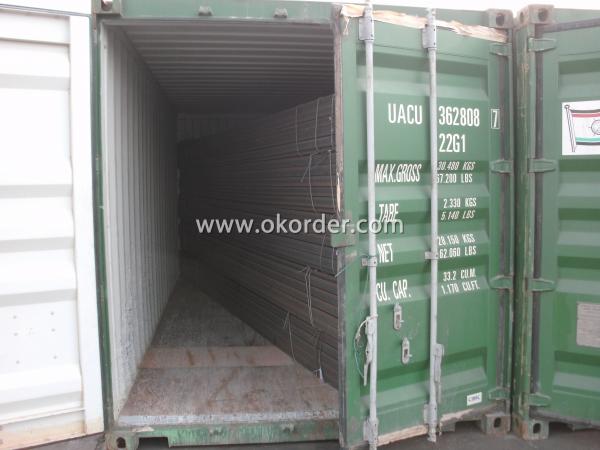
- Q:What are the considerations for deflection limits in steel I-beam design?
- There are several considerations for deflection limits in steel I-beam design. The first consideration is the structural integrity and stability of the beam. Excessive deflection can compromise the overall strength and safety of the structure. Another consideration is the serviceability of the structure. Excessive deflection can cause discomfort to occupants, affect the functionality of the building, or even lead to damages in non-structural elements such as partitions or finishes. The span of the beam is also an important factor. Longer spans generally require stricter deflection limits to maintain structural integrity and minimize any noticeable deflection. Lastly, the specific application or use of the structure may influence the deflection limits. For example, certain industries or applications may have more stringent deflection requirements due to equipment or operational considerations. Overall, the considerations for deflection limits in steel I-beam design are aimed at ensuring the structural integrity, serviceability, and functionality of the structure while meeting industry standards and requirements.
- Q:What are the different types of steel coatings used for Steel I-Beams in marine environments?
- There are various types of steel coatings used for Steel I-Beams in marine environments, including hot-dip galvanizing, epoxy coatings, and polyurethane coatings. These coatings are applied to provide corrosion protection, enhance durability, and increase the lifespan of the steel beams in the harsh marine environment.
- Q:Are steel I-beams resistant to chemical exposure?
- Steel I-beams are generally resistant to chemical exposure. However, the level of resistance may vary depending on the specific chemical involved, its concentration, and the duration of exposure. It is important to consult with experts or refer to chemical compatibility charts to ensure proper protection and maintenance of steel I-beams in corrosive environments.
- Q:What are the common deflection limits for steel I-beams?
- The common deflection limits for steel I-beams are typically determined by industry standards and building codes. The deflection limit refers to the maximum amount of bending or sagging that a beam can experience under load without compromising its structural integrity or causing any visual or functional issues. The deflection limits for steel I-beams are influenced by several factors, including the beam's size, span, and the type of load it will be supporting. These limits are usually specified as a ratio of the beam's length to its deflection, known as the L/ (length/deflection) ratio. In general, the deflection limits for steel I-beams can range from L/240 to L/360, depending on the specific application and building codes in a particular region. For example, a commonly used deflection limit is L/360, meaning that the maximum deflection of the beam should not exceed 1/360th of its length. It's important to note that these deflection limits are not only important for ensuring the structural safety of the beam but also to maintain the aesthetic appearance and functionality of the structure. Excessive deflection can lead to issues such as cracking, vibrations, or sagging of floors or ceilings, which can be undesirable in many applications. It is crucial to consult the relevant building codes and engineering standards to determine the specific deflection limits for steel I-beams in a given project. Additionally, it is recommended to work with a qualified structural engineer who can evaluate the specific requirements and provide accurate deflection limits based on the project's design and load requirements.
- Q:Can steel I-beams be used in the construction of industrial warehouses?
- Yes, steel I-beams are commonly used in the construction of industrial warehouses due to their structural strength, durability, and ability to support heavy loads.
- Q:Are there any special considerations when designing with steel I-beams in residential applications?
- Yes, there are several special considerations when designing with steel I-beams in residential applications. Firstly, it is important to consider the load-bearing capacity of the I-beams. Unlike wood or other materials, steel I-beams have high strength-to-weight ratio, allowing them to support heavy loads. However, it is crucial to accurately calculate the loads and forces that will be applied to the beams in order to ensure they are adequately sized and spaced to provide sufficient support. Another consideration is the proper installation and support of the I-beams. Steel I-beams require proper bracing and connections to ensure they are securely fastened and can effectively transfer loads to the foundation or supporting structure. It is important to consult with a structural engineer or other qualified professional to determine the appropriate installation methods and ensure compliance with local building codes. Additionally, steel I-beams can be susceptible to corrosion if not properly protected. In residential applications, where the beams may be exposed to moisture or other corrosive elements, it is important to use appropriate protective coatings or treatments to prevent rust and deterioration. Regular inspections and maintenance should also be performed to identify and address any signs of corrosion. Fire protection is another consideration when designing with steel I-beams. While steel is inherently fire-resistant, prolonged exposure to high temperatures can weaken the beams. Therefore, it may be necessary to incorporate fire-resistant materials, such as spray-on fireproofing or fire-rated drywall, to enhance the fire resistance of the overall system. Lastly, it is important to consider the aesthetic aspect of steel I-beams in residential applications. While some homeowners may appreciate the industrial or modern look of exposed steel beams, others may prefer a more traditional or concealed appearance. Designers and architects should take into account the homeowner's preferences and explore creative solutions to integrate the steel I-beams into the overall design scheme. In summary, when designing with steel I-beams in residential applications, special considerations include load-bearing capacity, proper installation and support, corrosion protection, fire protection, and aesthetic integration. Consulting with professionals and adhering to local building codes will ensure that the design is safe, durable, and meets the specific needs and preferences of the homeowner.
- Q:Can steel I-beams be used in coastal areas prone to saltwater exposure?
- Yes, steel I-beams can be used in coastal areas prone to saltwater exposure. However, they need to be properly treated and coated to protect them from corrosion caused by the saltwater. This is typically done through galvanization or the use of corrosion-resistant materials. Regular maintenance and inspections are also necessary to ensure the beams remain in good condition over time.
- Q:How do engineers determine the appropriate size of steel I-beams for a specific application?
- Engineers determine the appropriate size of steel I-beams for a specific application by considering various factors such as the load requirements, span length, and the type of structure. They use structural analysis techniques and mathematical calculations to determine the maximum bending moment, shear force, and deflection that the I-beam will experience. By evaluating these factors, engineers can select an I-beam size that can safely support the load and meet the structural and safety requirements of the application.
- Q:What are the different methods of connecting steel I-beams to other structural elements?
- Different methods are available for connecting steel I-beams to other structural elements, depending on the project requirements and design considerations. Here are some commonly used methods: 1. Welding: Steel I-beams can be connected to other structural elements through welding. This involves melting the base metal of both the I-beam and the connecting element, and then joining them using a filler material. Welding creates a strong and durable connection, ensuring structural integrity. 2. Bolted Connections: Another method for connecting steel I-beams is through bolted connections. This involves using bolts, nuts, and washers to secure the I-beam to the connecting element. Bolted connections offer flexibility and ease of installation, allowing for adjustments and disassembly if needed. 3. Riveting: Riveting, although less commonly used nowadays, is a traditional method for connecting steel I-beams. It involves drilling holes in both the I-beam and the connecting element, and then using rivets to secure them together. Riveting provides a reliable and sturdy connection, but it requires specialized tools and skilled labor. 4. Adhesive Bonding: Adhesive bonding is a method that utilizes high-strength adhesives to connect steel I-beams. It involves applying adhesive to the surfaces of both the I-beam and the connecting element, and then joining them together. Adhesive bonding offers benefits like weight reduction, improved aesthetics, and corrosion resistance, but its suitability depends on the specific application. 5. Mechanical Fasteners: Mechanical fasteners, such as clevises, turnbuckles, and shackles, can also be employed to connect steel I-beams to other structural elements. These fasteners provide a secure and adjustable connection, facilitating easy installation and maintenance. It is important to consider various factors, including load requirements, structural design, accessibility, and cost, when selecting the appropriate connection method. Consulting with a structural engineer or professional contractor is highly recommended to ensure the best choice for a specific project.
- Q:Can steel I-beams be used in water or wastewater treatment plant construction?
- Yes, steel I-beams can be used in water or wastewater treatment plant construction. Steel I-beams are commonly used in construction due to their strength, durability, and load-bearing capacity. In water or wastewater treatment plant construction, where structures need to withstand various environmental conditions and heavy loads, steel I-beams are often utilized for supporting platforms, walkways, tanks, and other critical infrastructure components.
1. Manufacturer Overview |
|
|---|---|
| Location | |
| Year Established | |
| Annual Output Value | |
| Main Markets | |
| Company Certifications | |
2. Manufacturer Certificates |
|
|---|---|
| a) Certification Name | |
| Range | |
| Reference | |
| Validity Period | |
3. Manufacturer Capability |
|
|---|---|
| a)Trade Capacity | |
| Nearest Port | |
| Export Percentage | |
| No.of Employees in Trade Department | |
| Language Spoken: | |
| b)Factory Information | |
| Factory Size: | |
| No. of Production Lines | |
| Contract Manufacturing | |
| Product Price Range | |
Send your message to us
Hot Rolled Steel I-Beam IPE IPEAA EN10025 S235JR with Good Price
- Loading Port:
- Tianjin
- Payment Terms:
- TT OR LC
- Min Order Qty:
- 100 m.t.
- Supply Capability:
- 30000 m.t./month
OKorder Service Pledge
OKorder Financial Service
Similar products
New products
Hot products
Hot Searches
Related keywords
